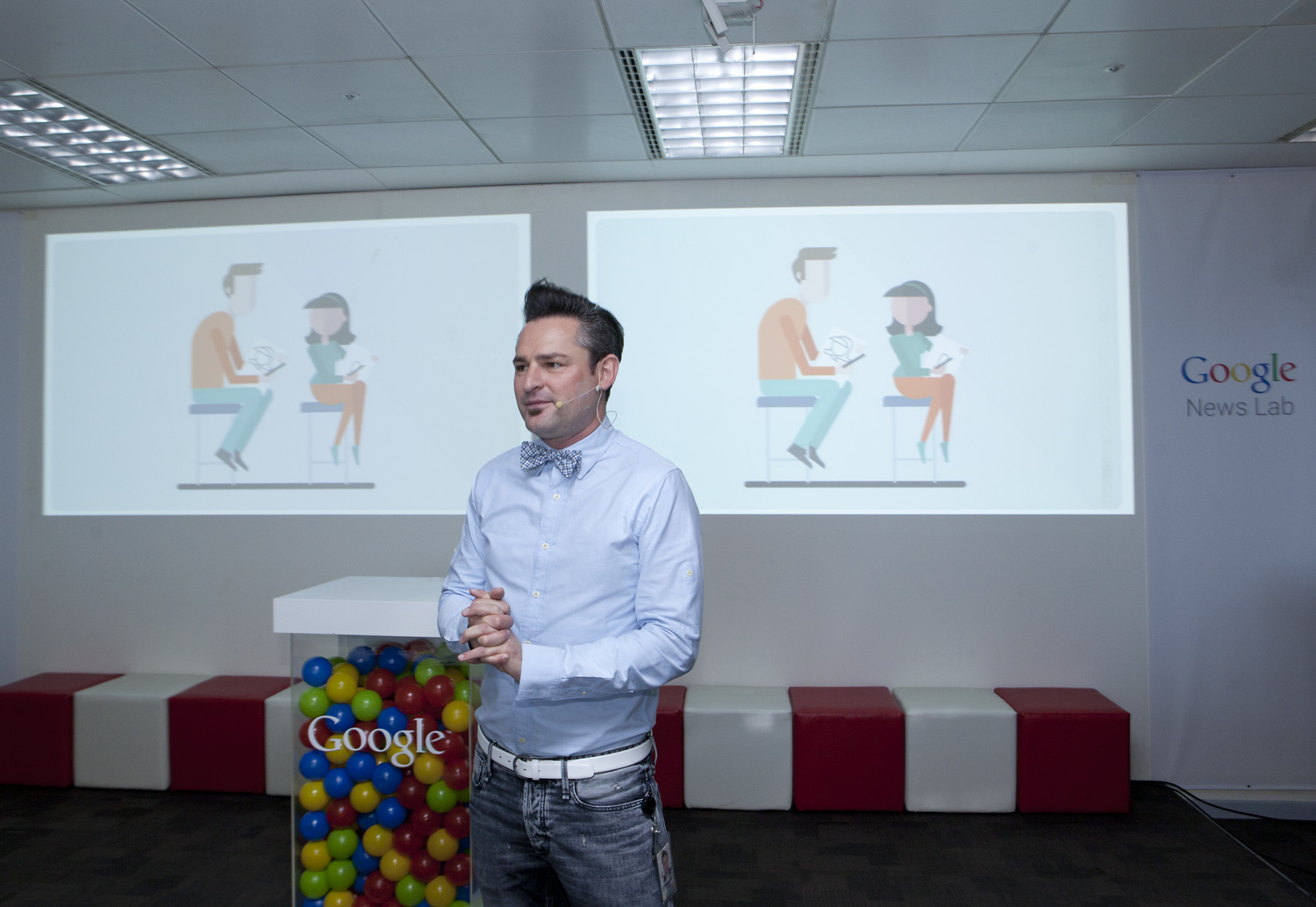Editor’s note: Last week Frederik G. Pferdt, Head of Innovation and Creativity Programs at Google, came to Australia, Korea, Japan, and Singapore to give a few talks on how to foster a culture of innovation amongst large organizations. Below is his guest post outlining his speech’s main points.
 |
Frederik Pferdt giving a talk on creativity at Google Korea
|
Innovators have the audacity to ask a seemingly simple—but powerful—question:
what if? In the business world, asking what if can be transformative. What if we could replace the horse and buggy with a machine? What if we could have all the books in the world available in our pockets? What if we could run a powerful car using electricity? What if a car could drive itself—or fly?
How do we get more people in organizations in the ‘what if’ mindframe? There is no single model of innovation and it cannot be forced. But companies can foster a culture so that people within it are given the freedom to “play” and be curious, while exploring new ways of doing things. And this open, experimental culture is by no means limited to American or Western companies.
In Google’s headquarters in Mountain View, California, I co-founded a space called the Garage that is a tinkering, prototyping space open to all Googlers at any time. The idea is to put teams in a place that encourages experimentation and creativity, while minimizing the steps to creating a prototype, whether it be software, hardware, or an idea. We put the “wheels” on the Garage this past week when we brought the Garage’s core training program,
CSI:Lab, on the road in Asia.
Throughout my time here in Asia, I was incredibly surprised to see how people can tap their creativity and solve complex problems when they are given the right environment and surrounded by a diverse group of people. One of my exercises aimed at encouraging people to adopt a beginner’s mindset is to have people draw a sketch of the person next to them. Normally, adults hem and haw about about how unprofessional their drawings are. Interestingly enough, though, I found that Koreans, Japanese, and Singaporeans weren't embarrassed about their drawings in the least—in fact, they were were very proud of them. This boldness is a good sign to me that far from being risk-averse, or stuck in traditional modes of thinking, Asian leaders are ready to embrace innovation, and ask—what if?
I was invited to lead discussions with ministers, editors, business leaders to talk frankly about how they might tackle the challenges they face. In Japan for instance, we discussed developing a global start-up ecosystem with the Ministry of Economy, and explored why diversity is necessary for innovation and creativity with fifty women leaders. At the University of Tokyo, I met editors who wanted to rethink newspapers for a digital world, designing new solutions for free expression and the free flow of information.
Although there are certainly no simple solutions to challenges these organizations face, one step forward is adopting a framework of innovation in the corporate culture. At Google, four features of our culture empower our employees to ask and act on
what if:
a strong mission, transparency, ensuring everyone has a voice and demonstrating an optimistic attitude—all within a wider environment of trust and playfulness.
First, a strong mission gives meaning and motivates employees. Each organization will have a different mission, but the desire to make meaning is inherent in all of us. At Google, through an annual survey we conduct with all employees, called Googlegeist, we gauge whether people continue to find meaning in our mission and ensure that people continue to love the work they're doing.
Second, transparency builds trust. A transparent culture where information is accessible by employees and where information is shared freely can lead to much higher engagement. Within Google we share almost everything. This means an engineer fresh from university has access to the same code and systems as our senior product managers. Good ideas can come from anywhere, so an open culture means the most people are looking at any one area or problem.
Third, giving employees a voice can empower them to ask questions and raise concerns. This gives rise to better ideas, and reinforces the idea that everyone can participate. Perhaps most importantly, it gives leadership deep insights into what’s on people’s minds. At Google, we have a weekly all-company meeting with our founders and senior leaders where employees are encouraged to ask questions and challenge current thinking.
Finally, demonstrating an optimistic attitude about the future and building on each others ideas to grow them bigger, while experimenting your way forward helps to take responsibility to shape the future. A “yes, and” attitude builds community, generates positive energy, drives momentum, and stimulates creativity. This attitude is a little thing that actually can make a big difference. Having a “yes, and” attitude where people take risks by stepping in and getting involved in something is something you can practice to foster a culture of pushing the boundaries.
Having an open and transparent culture by default may well be one of the most cost effective thing a leader can do: culture costs nothing, but it needs to be nurtured with a creative and passionate workforce. This is also why hiring the right people is the most important thing a manager can do. If you find smart and creative people who are passionate about a mission, demonstrate an optimistic attitude about the future and you treat them like adults while trusting them to do the right thing, they actually will.
No comments :
Post a Comment